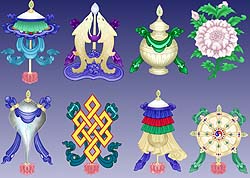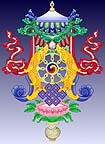|
|
|

Equilibrio.
Mejora fuerza, motilidad, equilibrio, resistencia. (Tse Bailey 1992)
Mejora significativa en equilibrio. (Wolfson 1996)
Cardiovascular.
ejercicio de baja a moderada intensidad. (Zhou 1984)
Ejercicio adaptado a individuos de alto riesgo en enfermedades cardiovasculares. (Schneider & Leung 1991)
Puede retrasar la degradacion de la funcion cardiorespiratoria en adultos de edad avanzada. (Lai 1995)
Puede ser prescrito como ejercicio de aerobic para ancianos. (Lai 1993)
Muy recomendado como ejercicio de aerobic en enfermedades de las arterias coronarias.
(Ng 1992)
Respuesta del Sistema Inmunitario (Linfocitos T-Cells)
Notable aumento durante y despues de la practica del Tai Chi Chuan. (Sun
1989)
Estados de Animo. (Self Reports)
Reduce notablemente tension, ansiedad, fatiga, depresion y confusion. (Jin 1989)
Mejora de estados de animo, reduccion ansiedad y stress. (Jin 1992)
Reduce Ansiedad. (Chen & Sun 1997)
Reduccion de Caidas en Geriatria.
Reduce las caidas hasta un 47%, reduce el miedo a caer. (Wolf
1996), (Wolf 1997), (Henderson,
1998) , (Myers & Weiner,
1996)
Respiratorio.
Aumenta la capacidad ventilatoria sin provocar stress cardiovascular. (Brown et al, 1995)
Uso eficaz del volumen ventilatorio, cuadro de ventilacion eficaz. (Schneider 1991)
Hormonas del Stress. (Niveles de Cortisol en Saliva.)
Caida significativa durante y despues de la Practica. (Jin
1989, Jin 1992)
Ejercicio de Soporte.
No exacerbacion de los sintomas articulatorios en individuos con RA. (Kirstens 1991)
Ejercicio de terapia como parte de un programa de Rehabilitacion. (Kirstens 1991)
Otros beneficios referenciados.
Mejora de la coordinacion, aumento de fuerza muscular, aumento de resistencia esqueletal. (Koh 1982)
Terapia de Relajacion en enfermedades cronicas. (Jin 1992)
Marcada accion terapeutica en motilidades reducidas. (Kirstens 1991)
Reduccion de la tension sanguinea, mejora en relajacion muscular y flexibilidad. (Chen & Sun 1997)
Sumario:
El estado actual de la Investigacion Medica indica que el Tai Chi Chuan es un excelente ejercicio para Geriatria, Cardiovascular, Rehabilitacion. La Practica del Tai Chi Chuan mejora el equilibrio, reduce caidas e incrementa la fuerza en las piernas. Rebaja las hormonas del stress, mejora las funciones respiratoria, cardiovascular e inmunitaria, y promueve bienestar emocional.
Achiron A, et al. Electrical sensation during Tai-Chi practice as the first manifestation of multiple sclerosis. Clin Neurol Neurosurg. 1997 Dec; 99(4): 280-281. CIT. IDS: PMID: 9491306 UI: 98152006
Brown DD, Mucci WG, Hetzler RK, Knowlton RG. Cardiovascular and ventilatory responses during formalized T'ai Chi Chuan exercise. Research Quarterly for Exercise & Sport. 1989;60:246-250.
Brown DR, Wang Y, Ward A, et al. Chronic effects of exercise and exercise plus cognitive strategies. Med Sci Sports Exer. 1995;27:765-775. CIT. IDS: PMID: 7674883 UI: 95405217
Channer KS, Barrow D, Barrow R, Osborne M, Ives G. Changes in hemodynamic parameters following T'ai Chi Chuan and aerobic exercise in patients recovering from acute myocardial inarction. Postgraduate Medical journal 1996;72:349-351. CIT. IDS: PMID: 8758013 UI: 96318925
Chen, W.; Sun, W. Tai Chi Chuan, an alternative form of exercise for health promotion and disease prevention for older adults in the community. International Quarterly of Community Health Education. 1997 Vol 16(4) 333-339
Gibb H, et al. A therapeutic programme for people with dementia. Int J Nurs Pract. 1997 Sep; 3(3): 191-199. CIT. IDS: PMID: 9391353 UI: 98052837
Gong LS et al. Changes in heart rate and electrocardiogram during taijiquan exercise. Chinese Medical journal ; 1981:94(9) 589-592.
Henderson NK, et al. The roles of exercise and fall risk reduction in the prevention of osteoporosis. Endocrinol Metab Clin North Am. 1998 Jun; 27(2): 369-387. Review. CIT. IDS: PMID: 9669143 UI: 98333750
Jin P. Changes in heart rate, noradrenaline, cortisol and mood during T'ai Chi. Journal of Psychosomatic Research. 1989;33:197-206.
Jin P. Efficacy of t'ai-chi, brisk walking, meditation,
and reading in reducing mental and emotional stress. J Psychosom Res.
1992;36:361-370.
Judge JO, Lindsey C, Underwood M, Winsemius D. Balance improvements in older women: effects of exercise training. Phys Ther. 1993;73:254-262.
Kirsteins AE, Dietz F, Hwang SM. Evaluating the safety????? and potential use of a weight-bearing exercise, tai-chi chuan, for rheumatoid arthritis patients. American Journal of Phys Med and Rehab ; 1991; 70 (3):136-141.
Kirsteins A Tai-Chi Chuan. Arch Phys Med Rehabil. 1998 Apr; 79(4): 471. No abstract available. CIT. IDS: PMID: 9552121 UI: 98211848
Kutner NG Barnhart H Wolf SL McNeely E Xu T. Self-report benefits of tai chi practice by older adults. J of Gerentology . 1997 52 (5): 242-46. CIT. IDS: PMID: 9310093 UI: 97455881
La Forge R Mind-body fitness: encouraging
prospects for primary and secondary prevention. J Cardiovasc Nurs. 1997
Apr; 11(3): 53-65. Review. CIT. IDS:
PMID: 9095454 UI: 97249568
Lai JS, Wong N4K, Lan C, Chong
CK, Lien IN. Cardiorespiratory responses of t'ai chi chuan practitioners
and sedentary subjects during cycle ergometry.
J Formosan Med Assoc. 1993;92:894-899.
Lai JS, Lan C, Wong MK, Teng SH. Two-year trends in cardiorespiratory function among older tai-chi chuan practitioners and sedentary subjects. J Am Geriatric Soc. 1995; 43:1222-1227. CIT. IDS: PMID: 7594155 UI: 96046716
Lam P New horizons ... developing tai chi for health care. Aust Fam Physician. 1998 Jan; 27(1-2): 100-101. No abstract available. CIT. IDS: PMID: 9503718 UI: 98164467
Lan C, et al. Cardiorespiratory function, flexibility, and body composition among geriatric Tai Chi Chuan practitioners. Arch Phys Med Rehabil. 1996 Jun; 77(6): 612-616. CIT. IDS: PMID: 8831482 UI: 96428379
Lan C Lai JS Chen SY Wong MK. Twelve-month
tai chi training in the elderly:
its effects on health and fitness. Med & Sci in
Sports & Exer. 1998 30 (3): 345-51 CIT. IDS: PMID: 9526879 UI:
98186075
Lutz S The benefits of Tai Chi. Beginnings. 1996 Apr; 16(4): 3. No abstract available. CIT. IDS: PMID: 8715985 UI: 96360526
Myers, E. R. & Weiner, G. I. Injury Prevention: Keeping Old Bones Whole. Harvard Health Letter. 21(11); September 1996.
Ng RK. Cardiopulmonary exercise: a recently discovered secret of t'ai chi. Hawaii Medical journal. 1992;51:216-217.
Province MA, Hadley EC, Hornbrook MC, et al. The effects of exercise on falls in elderly patients. A preplanned meta-analysis of the FICSIT Trials. Frailty and injuries: cooperative Studies of Intervention Techniques. JAMA. 1995;273:13411347. CIT. IDS: PMID: 7715058 UI: 95230871
Ross MC Preswalla JL. The therapeutic effects of tai chi for the elderly. J of Gerontol Nurs. 1998 24(2):45-7.
Schneider D, Leung R. Metabolic and cardiorespiratory responses to the performance of wing chun and t'ai-chi chuan exercise. Int J of Sports Med. 1991;12(3):319-23.
Sun XS, Xu Y, Xia Yj. Determination of E-rosette-forming lymphocytes in aged subjects with Taichiquan exercise. Int J of Sports Med 1989;10:217-219.
Sun, W.Y. Impact of a Tai Chi Chuan Program on the Health of Among Older Adults. Student Monograph. 12(1):73-80, July 1994.
Sun, W. Y.; Dosch, M.; Gilmore, G.; Pemberton, W.; Scarseth, T. Effects of a Tai Chi Chuan program on Hmong American older adults. Educational Gerontology. 1996 Mar Vol 22(2) 161-167 (Same as previous citation, published in a different periodical, see Sun, 1994)
Tse S, Bailey DM. T'ai Chi and postural control in the well elderly. Am J Occ Ther. 1992;46:295-300.
Wolf SL, Kutner NG, Green RC, McNeely E. The Atlanta FICSIT study: two exercise interventions to reduce frailty in elders. J Am Geriatric Soc. 1993;41:329332.
Wolf SL, Barnhart HX, Kutner NG, McNeely E, Coogler C, Xu T. Reducing frailty and falls in older persons: an investigation of T'ai Chi and computerized balance training. J Am Geriatric Soc. 1996;44:599-600. CIT. IDS: PMID: 8617895 UI: 96208898
Wolf SL, et al. Exploring the basis for Tai Chi Chuan as a therapeutic exercise approach. Arch Phys Med Rehabil. 1997 Aug; 78(8): 886-892. CIT. IDS: PMID: 9344312 UI: 98002997
Wolf SL, et al. The effect of Tai Chi Quan and computerized balance training on postural stability in older subjects. Atlanta FICSIT Group. Frailty and Injuries: Cooperative Studies on Intervention Techniques. Phys Ther. 1997 Apr; 77(4): 371-381. CIT. IDS: PMID: 9105340 UI: 97259220
Wolfson L, Whipple R, Judge J, Amerman P, Derby C, King M. Training balance and strength in the elderly to improve function. J Am Geriatric Soc. 1993;41:341343.
Wolfson L, Whipple R, Derby C, Judge J, King M, Amerman P, Schmidt L Smyers D. Balance and strength training in older adults: intervention gains and T'ai Chi maintenance. J Am Geriatric Soc. 1996;44:498-506. CIT. IDS: PMID: 8617896 UI: 96208899
Zhou DH. Preventive geriatrics: an overview from traditional Chinese medicine. American Journal of Chinese Medicine. 1982;10:32-39.
Zhou D, Shephard Rj, Plyley Mj, Davis GM. Cardiorespiratory and metabolic responses during Tai Chi Chuan exercise. Canadian Journal of Applied Sport Sciences. 1984;9:7-10.

Busca la palabra clave tai_chi_chuan en estos buscadores en varias lenguas.
AltaVista
Excite
HotBot
Infoseek
Lycos
Deja
Yahoo!
Amazon
Open Directory
eGroups